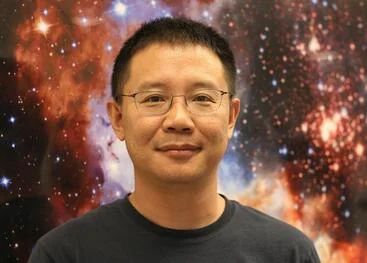UC Riverside uses supercomputer simulations to study dark matter; explaining two puzzling issues in astrophysics

A recent study conducted by the University of California, Riverside, proposes a new theory called "self-interacting dark matter" (SIDM) that could solve two astrophysics mysteries related to dark matter. Dark matter makes up about 85% of the universe's matter, but it cannot be seen directly as it is nonluminous. The SIDM theory suggests that dark matter particles interact with each other through a dark force, causing stronger collisions closer to the center of galaxies.
The first mystery involves a high-density dark matter halo observed in a massive elliptical galaxy through gravitational lensing, which conflicts with the prevailing cold dark matter theory. The second puzzle concerns ultra-diffuse galaxies, which have very low-density dark matter halos that are hard to explain using the cold dark matter theory.
To address these mysteries, a research team led by Professor Hai-Bo Yu conducted high-resolution simulations of cosmic structure formation. These simulations showed that dark matter self-interactions result in heat transfer in halos, leading to diversified halo densities in the central regions of galaxies.
The team claims that the SIDM theory offers a compelling explanation for these two astrophysics mysteries, challenging the standard cold dark matter paradigm. They suggest that dark matter may be more complex and active than previously believed. The research also emphasizes the significance of using astrophysical observations and supercomputer simulations to study dark matter.
The study received support from the John Templeton Foundation and the U.S. Department of Energy. The full publication, titled "A Self-interacting Dark Matter Solution to the Extreme Diversity of Low-mass Halo Properties," is available as an open-access document. This research's potential implications are particularly relevant given the anticipated data influx from upcoming astronomical observatories like the James Webb Space Telescope and the Rubin Observatory.

 How to resolve AdBlock issue?
How to resolve AdBlock issue?